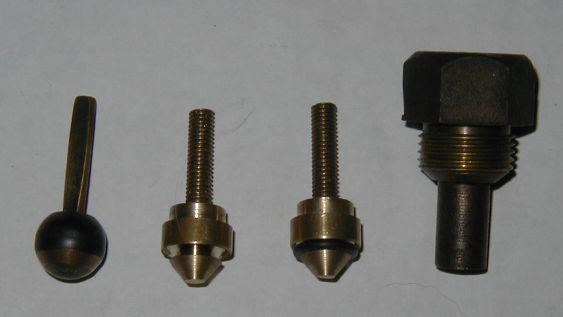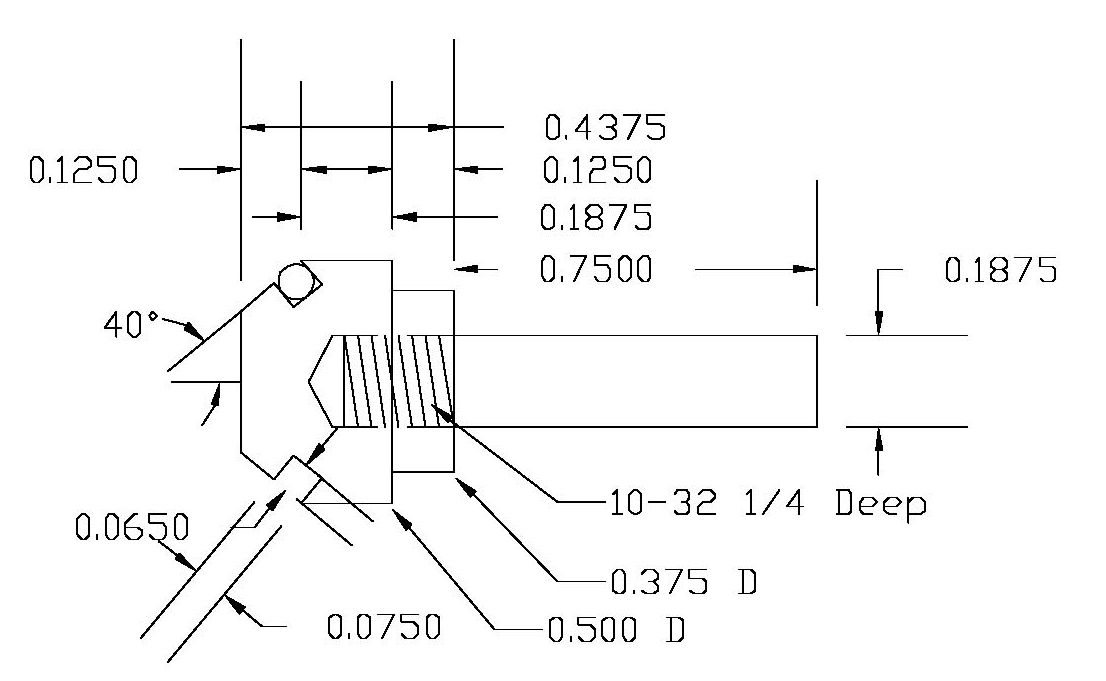
A Stanley Feed Pump Fix
Last year, as I pressure tested my boiler, I noted that I needed about ten strokes of the hand pump a minute just to keep up with some internal leak at 400 psi. This was found to be leakage through the feed pump checks. Assuming the leakage was proportional to the pressure, this implied a loss of about five gallons an hour in pump capacity at full pressure. This was not a big deal when cruising at road speeds, but in a parade at walking speed it was serious!
The valves in condensing car pumps use guided balls as poppets; the balls are fitted with a stem about an inch long which runs in a guide bored 3/16 inch diameter. Rather than trying to fit new ones, which would have required remachining the valve seats, I decided to make a valve that would seal on a worn seat. This was out of pure laziness, I had no desire to tear the pump box totally apart!
The new valve poppets are fitted with a size 011 Viton O-ring, which seals even if the seat is no longer perfectly circular. The poppet is made with a conical face, at an angle of 40 degrees from the axis. This angle was chosen after carefully measuring the angles of the wear patterns on all the pump valves on hand, both those from the car and all the spare pumps in my collection.
The thickness of the poppet shown should give the same lift as the balls had. The step in diameter on the back of the poppet is to make machining easier; holding the reduced diameter in a three jaw chuck allows cutting the conical faces of a batch of valves with a fixed setup. Then, the setup is changed to cut the O-ring groove. And all the poppets can be grooved with the second essentially fixed setting. The step will also allow fitting a return spring to seat the output checks, if that proves desirable. Springs should not be used on suction checks.

Some pump parts;
Left: old check. Note wear. Next: new check. Note groove. Center right: new check with O-ring. Right: cap.
Experiment showed the O-ring groove should not be the size recommended in O-ring manuals. It should be narrower but deeper; in this case about 0.075 inch wide and 0.065 inch deep, and cut perpendicular to the face of the poppet. The bit used to cut the grooves must be ground with large relief angles as one is cutting conical surfaces. With grooves having the manual's specifications, the O-rings occasionally popped out of the groove. In one case, the ring got cut and vanished down the piping to cause problems elsewhere! With the deeper groove, the valves have given no problems in the 3000 miles I have driven this year. I think it may be possible to make the valves with radially cut grooves, but have not tried that configuration.
For the stems, I drilled and tapped the back of the poppet 10-32 about a fourth of an inch deep and screwed in short lengths of 10-32 threaded rod. The rolled thread of the rod was enough smaller than the nominal diameter of number 10 threads to run nicely in the existing guides in the pump caps.
Do they work? Last Memorial Day, I drove the car in the local parade, which covers about a mile and a half in two hours. Expecting the usual difficulty in maintaining water level at slow speeds while periodically blowing a whistle, I started with two feed pumps. To my astonishment, I nearly flooded the boiler! In my car, the automatic bypasses one pump only, the other pumps (I have three on the car) are totally under manual control. In effect, one pump, running continuously, was excessive.
For what it is worth, almost all the driving I have done this year needed only one pump. Even crossing the Berkshire mountains on the Mohawk Trail, the boiler was less than two inches down after 30 miles of steady climbing, and was completely refilled by the time I went around Dead Man's Curve on the down hill west side.
If you find you need two pumps more often than you should, maybe the checks need checking. By the way, it is probably a good idea to repack the plungers about every 10,000 miles.

Cross section of new check
D. K. Nergaard, 15 October 2006
Back to Papers